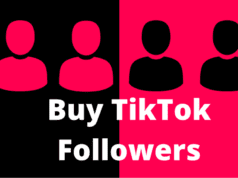
Home sweet home; homepage, that is. Whatever industry you are in, whatever stage your business is in or its size, you will need a website. It’s your digital marketing hub and often the first contact base between you and a customer or client. How you build your website can influence major search engines. That is why it is important to know the basics before you create one.
Have a look at 10 things you can do to be the owner of a site that ranks high.
Navigation
You don’t get a second chance to make a good first impression. To achieve that, keep your website simple, organized, and one which reflects your work in a positive light. A website that is hard to navigate through will just get people clicking ‘back’. The ‘less is more’ concept is very true in website design.
Sales conversion
What’s your best sales conversion mechanism? Phone calls? Then make it easy for people to call. Watching videos? Then put it in the front and center before a visitor has to scroll down for it. Professionals at Thunderhawk SEO, assure you that ranking organically at the top of the search results drastically increases your free web traffic sources. Higher rankings ensure more traffic, more leads, higher sales, and more conversions.
Lessen the options
Giving a visitor too many options can often backfire on you. Don’t overwhelm them with too many choices, too much jargon, or too many calls to action (CTA).
Responsive Layout
Half of all searches are done on different devices other than a desktop computer. This means your website has to look good and fit all different screen sizes.
Optimize images
Keep image sizes from 30 to 100 KB with a resolution of 72 dpi for pages to load quicker. Link the image to the topic of your business by providing the same tag line.
Fast loading time
To put the word ‘fast’ in perspective, mobile users wait five seconds for the page to load, and desktop users wait only three seconds. One way to quicken the time is to lessen the use of Javascripts. Search engines crawl through websites to index them, so excessive use of JavaScripts will cause crawling issues.
Sitemaps
From an SEO point of view, you can create an XML sitemap. For SEO, an XML sitemap is an invitation to crawl the URLs listed.
Keywords
Keywords are part of your content, and content is still king when it comes to getting ranked. But you don’t want to overuse keywords because that gives a page a spam look. Keep keywords density between 20% to 30% of each blog or article on your website.
Social media
Social media platforms still have the power to sell. Make sure your social media links have all been added on your pages.

Visual Hierarchy
When all is done, how does the page look like to you? Is it readable? Have you used the top quarter to communicate your key products/services/features? Are images and text placed in the right location?
The best web designed pages will not confuse visitors. Many times you’ll have to do the thinking of a user and ask yourself what do they want and how do they want it. Keeping the end-user mind plus SEO can get you high rank, and sell more, which is the ultimate purpose of your site.








